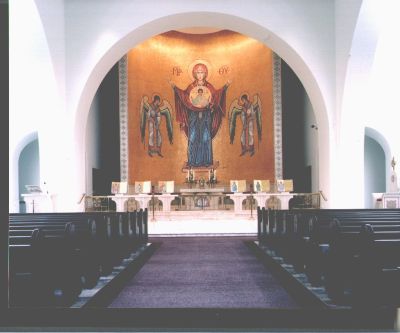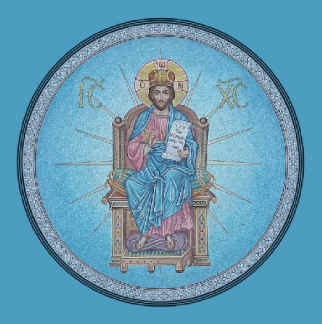Source: Mormon Matters
Lately, I’ve been thinking a lot about how the familiar Mormon claim that we are the “one true Church” is as much a statement about other churches as it is about our own. And I’ve been thinking about how ignorant and uninformed I feel about other churches because I can count on one hand the number of times I’ve visited one.
So recently I decided to start visiting other churches a lot more often in hopes that I can develop some personal, first-hand knowledge about them. And it seemed fitting to start by paying my first visit to the church that claims to be the oldest “one true” Christian church: the Orthodox Christian church.
Like Mormons, Orthodox Christians explain: “We’re neither Protestant nor Roman Catholic.” An Orthodox website explains where they see themselves in relation to the various Christian denominations:
Roman Catholicism is a medieval modification of the original Orthodoxy of the Church in Western Europe, and Protestantism is a later attempt to return to the original Faith. To our way of thinking, the Reformation did not go far enough.
We respectfully differ with Roman Catholicism on the questions of papal authority, the nature of the church, and a number of other consequent issues. Historically, the Orthodox Church is both “pre-Protestant” and “pre-Roman Catholic” in the sense that many modern Roman Catholic teachings were developed much later in Christian history.
Thus, Orthodox Christians and Mormons agree that the Catholic church became corrupted, and that the Reformation did not successfully remedy the defects in the Catholic church. But while Mormons would assert that no Christian church retained the priesthood keys throughout the ages, the Orthodox Church asserts that the original Christian church’s orthodoxy and authority remained intact in the East while the Roman Catholic church apostatized in the West. Accordingly, they are commonly referred to as “Eastern Orthodox” churches.
Because the Orthodox church was brought to America via various immigrant groups from Eastern Europe, such as Russia or Greece, each Orthodox church in America usually bears the name of the particular immigrant group that established it, e.g., Russian Orthodox Church or Greek Orthodox Church. As far as Orthodox Christians are concerned, there is just one Orthodox church, and these descriptive national designations will eventually be removed. In fact, there are currently efforts to unify all the Orthodox churches in America under the same name by removing their various national designations, which can be confusing for outsiders (“Can I go to a Greek Orthodox Church if I’m not Greek?”).
There is a beautiful Greek Orthodox Church named St. Paul’s in my hometown that, despite my having lived here for 20 years, I had never set foot in until just last weekend. I wasn’t able to attend their regular “family” service because it is held at the same time as my Sacrament meeting. However, I was able to attend their “Matins” service at 9 a.m., which seemed like their equivalent of a “music and the spoken word” program held each Sunday before their regular family service.

When I arrived, I introduced myself to a woman in the parking lot and explained I was there visiting the Orthodox church for the first time. When I told her my name was Andrew, she smiled and said: “That’s quite a coincidence! Today is St. Andrew’s day and we are commemorating him in our Matins service this morning!” Of course, before that moment I had no idea it was St. Andrew’s day, but I was delighted to hear that I would be accidentally celebrating it.
After having me sign a guest book, my guide showed me into their equivalent of a chapel, which they call the “Sanctuary.” In the lobby just outside the main Sanctuary, there was a beautiful Byzantine-style painting of a saint that I did not recognize. Upon entering the lobby, my guide crossed herself and leaned over and kissed the portrait. She then walked me over to the candles and asked whether I wished to light one. I couldn’t think of any reason why not, so I lit a candle and dropped a dollar into the basket.
My guide then showed me into the main Sanctuary, which is pictured below.
As you can see in the photo above, the Sanctuary is an immense, white-walled open space whose main focal point is a beautiful mosaic of Mary, Jesus, and two angels at their sides. What is less visible in the photo above is that the background tiles are painted a metallic gold, which creates a beautiful and awe-inspiring impression. The Sanctuary’s enormous space makes one feel small, which is humbling and invokes a sense of reverence.
In the center of the Sanctuary above one’s head is another beautiful mosaic depicting Christ sitting upon a throne, which is pictured below.
When I arrived at the Sanctuary, the Matins was already in session. I was immediately surprised to see I was one of only about eight or nine people in attendance. My guide gave me a booklet in which was printed the Matins program for that day. As I leafed through it, I saw that it was essentially a script for the entire Matins program, consisting of prayers, scriptures, and short hymns.

My guide told me I was free to choose any pew. I thanked her and started walking down the center aisle. When I realized my guide was not accompanying me, I looked back and she had a somewhat concerned look on her face. I walked back to her and she kindly explained that normally people enter the pews from the outside aisles, rather than down the center aisle. I was disappointed that I had only been there two minutes and had already made my first rookie mistake!
I then walked down the outside aisle to a pew about six rows from the front, and took my place at the end of the row. But I did not sit. I stood. I had done a little reading on the St. Paul’s website beforehand and learned that at Orthodox services, those in attendance typically stand throughout the entire service as a sign of reverence (of course, those who are elderly or physically unable to stand need not do so).
As the eight or nine of us in attendance stood, a priest and three readers each took turns reading from the Matins script. What first caught my attention is that they were reading in a melodic half-singing, half-chanting sort of way. At first it was unfamiliar and a bit surprising. But as I read along in the Matins script as they sang/chanted, I soon became entranced by the melody and rhythm and was able to focus intently on the beautiful prayers, scriptures, and hymns that had been selected. And although I missed every cue to cross myself or repeat words back to the priest, and failed to turn to face the priest with the rest of the worshipers as he carried incense up the center aisle, I felt quite comfortable and enjoyed the Matins ceremony immensely.
I was also struck by the fact that the two priests and a couple of the readers all wore beards, which was a stark contrast to the clean-shaven Bishoprics we’re accustomed to seeing sitting on the stand at LDS services. While beards are eschewed by LDS leaders, apparently beards are regarded quite well by the Orthodox. And although both priests were men (only men can be priests in the Orthodox church), one of the black-robed readers on the stand was a woman.
As I stood listening and reading along during the Matins service, in the back of my mind I tried to think of the one or two words I would use to describe the experience. The first word that came to mind was “Beautiful”. The richly colored mosaics set against the pure white open space of the Sanctuary, and the melodic sing-chanting of the prayers, scriptures, and hymns, was in all an absolutely beautiful experience. And as I stood there, I felt a sadness that only a handful of people were even there to appreciate it. I almost wanted to go out into the streets and tell everyone what they were missing.
The other word that repeatedly came to mind was “Reverence”. There was a deep sense of reverence pervading the Matins service. The worshipers standing attentively in the pews, the absence of any musical instruments other than the voice that God gave to man, and the complete absence of any infants or toddlers made for a very reverent, serene worship experience.
And as I stood in my pew, I paused periodically to search my heart for the answer to the main question I had brought with me, which was whether or not I would be able to sense God’s presence there.
And I did.
As the priest and readers beautifully quoted passages of scripture, sang hymns, and prayed in Christ’s name, it confirmed to me the truthfulness of Christ’s promise: “For where two or three are gathered together in my name, there am I in the midst of them.” (Matt. 18:20.) As Elder Boyd K. Packer once said: “The idea that with the Crucifixion of Christ the heavens were closed and that they opened in the First Vision is not true. The Light of Christ would be everywhere present to attend the children of God; the Holy Ghost would visit seeking souls. The prayers of the righteous would not go unanswered.” (Boyd K. Packer, “The Light of Christ,” Ensign, Apr. 2005, 11.) My visit to the Orthodox church showed me that those words are as true now as they were then.
President Hinckley said: “Be respectful of the opinions and feelings of other people. Recognize their virtues; don’t look for their faults. Look for their strengths and their virtues, and you will find strength and virtues that will be helpful in your own life.” (Sheri L. Dew, Go Forward with Faith: The Biography of Gordon B. Hinckley (1996), 536, 576.) With that in mind, here are just a few of the strengths and virtues I saw in Orthodox Christian worship that I feel could be helpful in my own spiritual life:
– A deep sense of reverence. I feel I could greatly benefit from trying to adopt a much more reverent attitude about what is occurring in the chapel on Sundays: the prayers, the Sacrament, the sermons, etc. You really get the sense that Orthodox worshipers feel that what is taking place in their Sanctuary is a sacred, holy experience.
– An intense focus on Christ. There is no question that the Matins service at the Orthodox church was Christ-centered. It was filled with references to Christ, scriptures about Christ, prayers invoking Christ’s name, and hymns about Christ.
– Worship. Although this is somewhat duplicative of point #1 above, one thing that struck me about the Orthodox Matins was that it truly felt like a “worship” experience. The word “worship” is defined as “reverent honor and homage paid to God or a sacred personage.” Because the service was so reverent, it also felt worshipful.
* * * * *
Some interesting facts about Orthodox Christianity:
There are some 250 million Orthodox Christians in the world.
Most Christians in Greece, Romania, Bulgaria and Serbia, Russia and Ukraine are Orthodox.
Three million Americans are Orthodox Christians
The heaviest concentrations of Orthodox in America are in Alaska, Pennsylvania, New Jersey, New York, and Ohio.
Organized Orthodox Church life first came to America in 1794 with missionaries from old Russia who came to Alaska.
Centuries of vigorous Orthodox missionary activity across 12 times zones in northern Europe and Asia was halted by the Communists after the Soviet Revolution in 1917.
Orthodox missions are active in Central Africa, Japan Korea and many other parts of the world.













